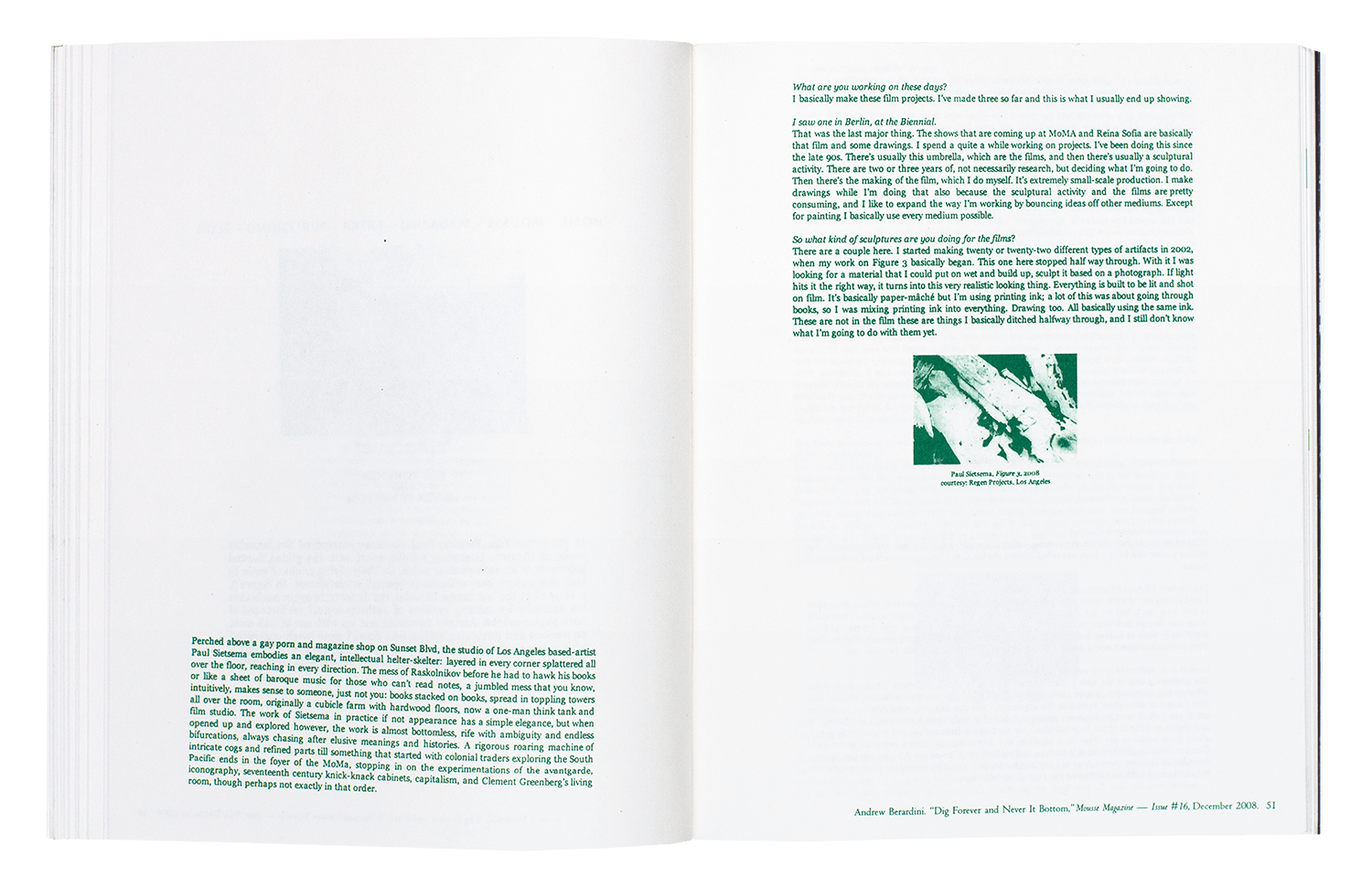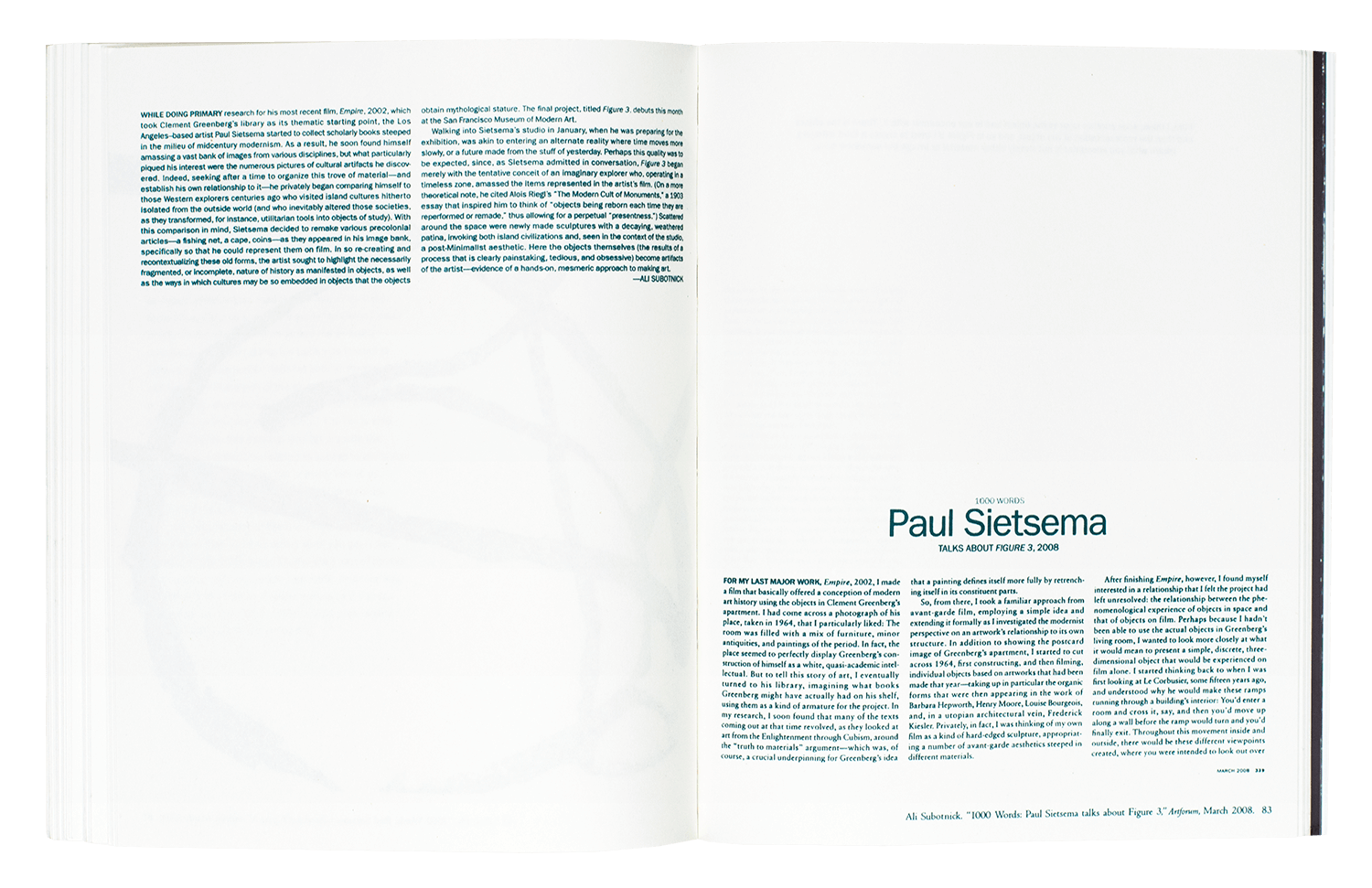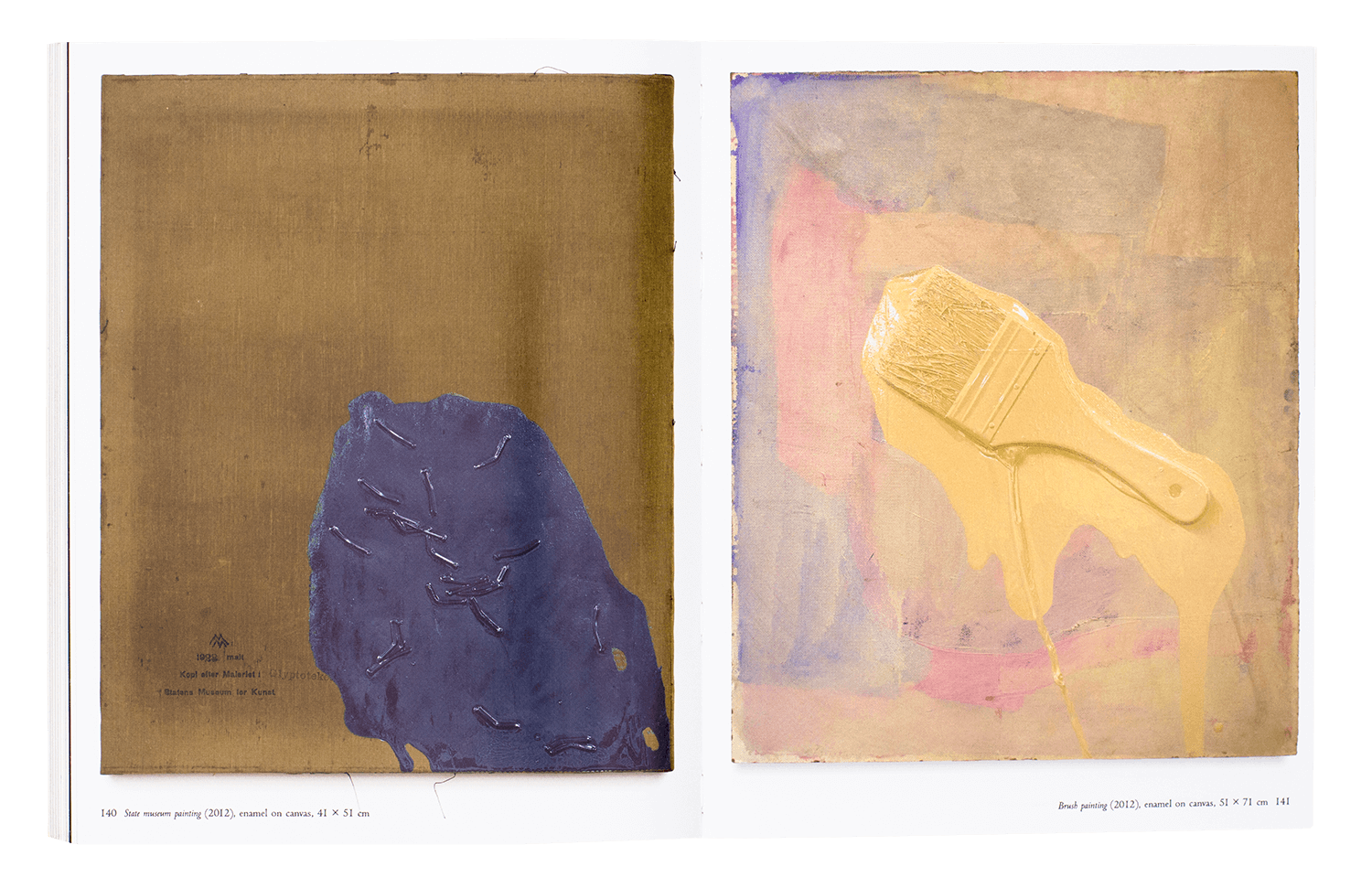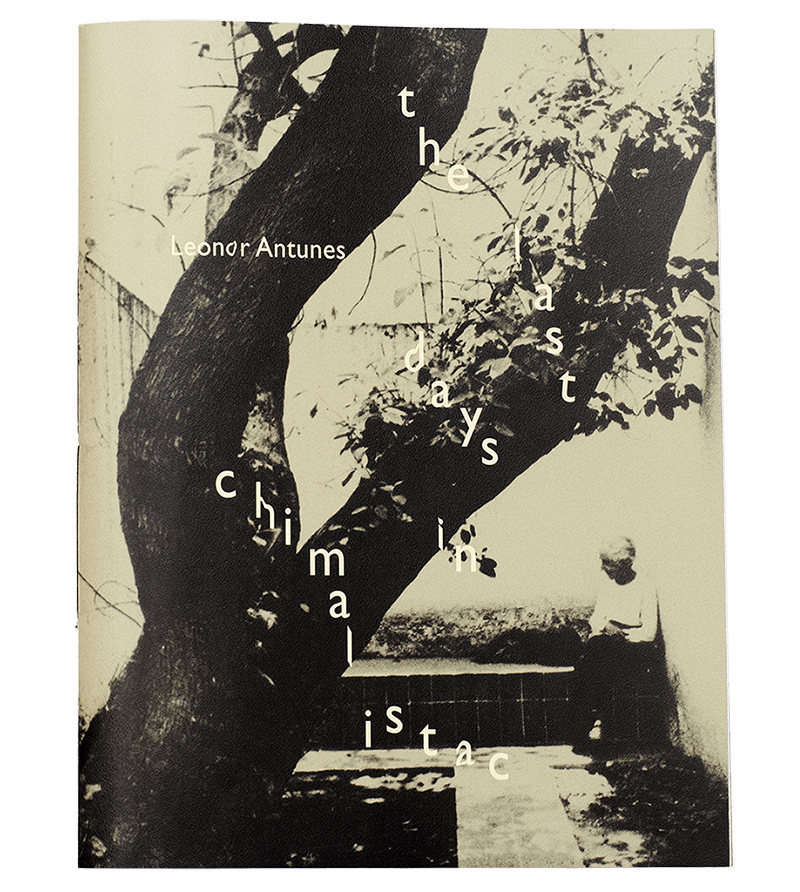Paul Sietsema: interviews on films and works
Paul Sietsema uses his studio not as a work place where ideas assume physical shape, but as an allegory of work and a “printer” of ideas and things, a site where generative and transformative grammar of production is revealed. As a first step, the physical constituents of a painting or drawing, such as stretcher, back paper, frame and glass, may be laid bare, such as in the new film Encre Chine (2012), which features a selection of picture frames and other cultural debris from Sietsema’s rich collection that were then placed on a work table and covered with layers of viscous black ink. This process of transformation — from specific objects with specific history and, perhaps, iconography, to a pool of black ink, erasing the objects’ individuality and lending them a look of a lava field — can be compared to the act of naming, or rather renaming, once familiar things. In their place, another kind of “thingness” is forged, dissolving the historicity of individual object in the opaque deep of black monochrome relief, similar to a landscape of mud after the flood. The other film in the show, Telegraph (2012) introduces a phrase “LETTER TO A YOUNG PAINTER”, whereupon only one letter is visible at a time, to be then replaced by the subsequent one in slow-paced succession. The letters are “built” of pieces of wood found on sites of houses that were destroyed by hurricane Katrina when it hit New Orleans. There is almost no narrative development in this and other films by Sietsema, but rather a diachronic construction, similar to that of a sentence, created by adding isolated images over a period of time.
Sietsema’s working process is essentially always about reworking — or working into — the image and its carrier. Thus, the banality or any historical and emotional value that a given “original” image or object may have had, gives way to the art work that, while retaining some characteristic of the “original”, is new, and while degrading some of the inherent “value” of the source material, simultaneously elevates it. Sietsema treats images as facts which need to be explored and whose meaning can be significantly expanded. The exhibition includes a group of works on meticulously hand-copied newspaper spreads, with their usual mix of current events from politics, culture and human interest, partly obliterated by representations of objects, mostly painter’s tools, submerged in and surrounded by splashes of paint. These works, such as Untitled figure ground study (Degas/Obama) or Untitled figure ground study (facing German suffering) (both 2011) establish a disquieting interplay between the flat surface of newspaper, carrying the now historical and formerly “hot” news.
English, 210 × 265 mm, 144 pages, 50 b/w and 31 color illustrations, softcover. Available via the Kunsthalle Basel and Sternberg Press. ISBN 978-3-943365-24-5
















